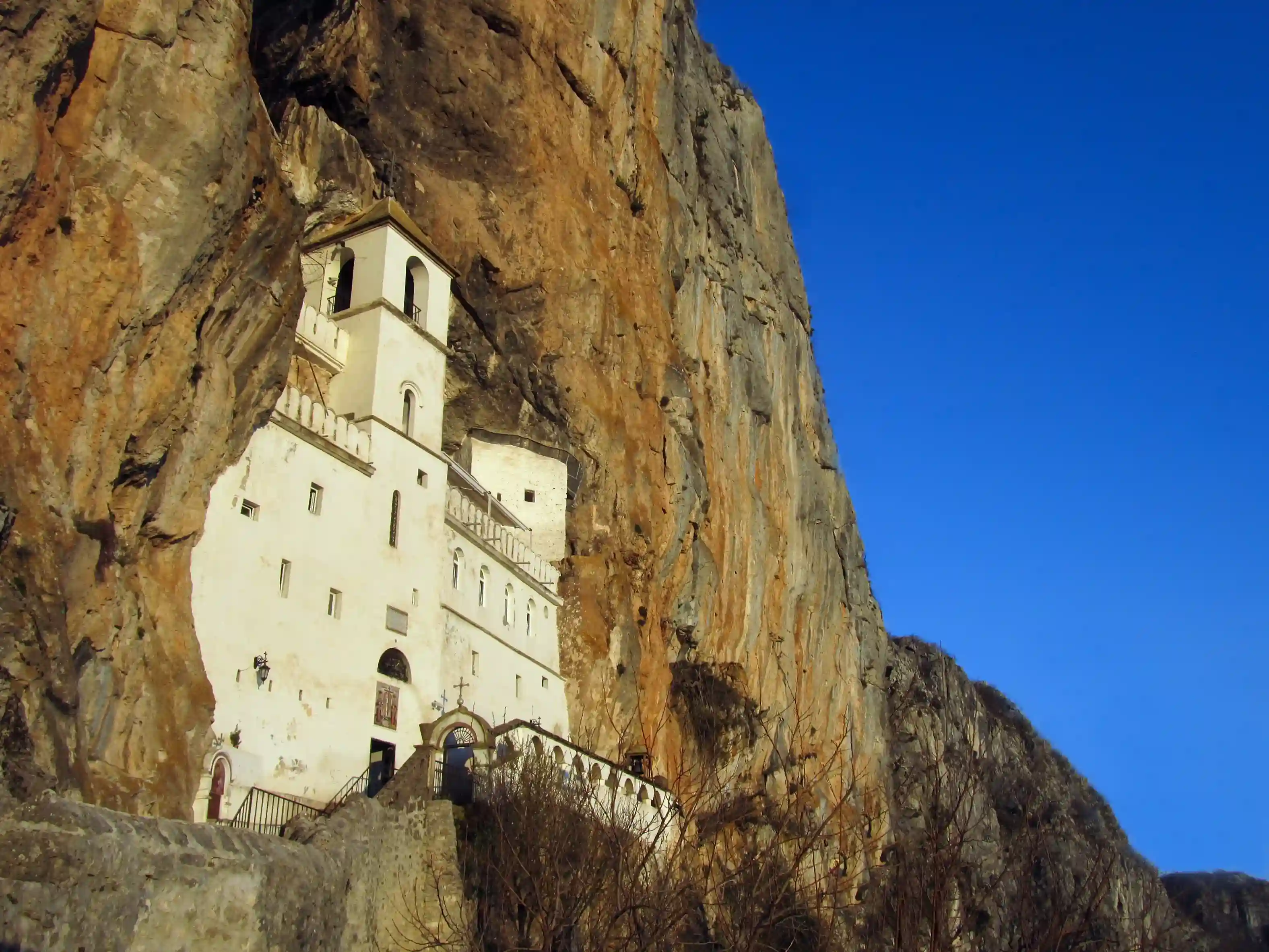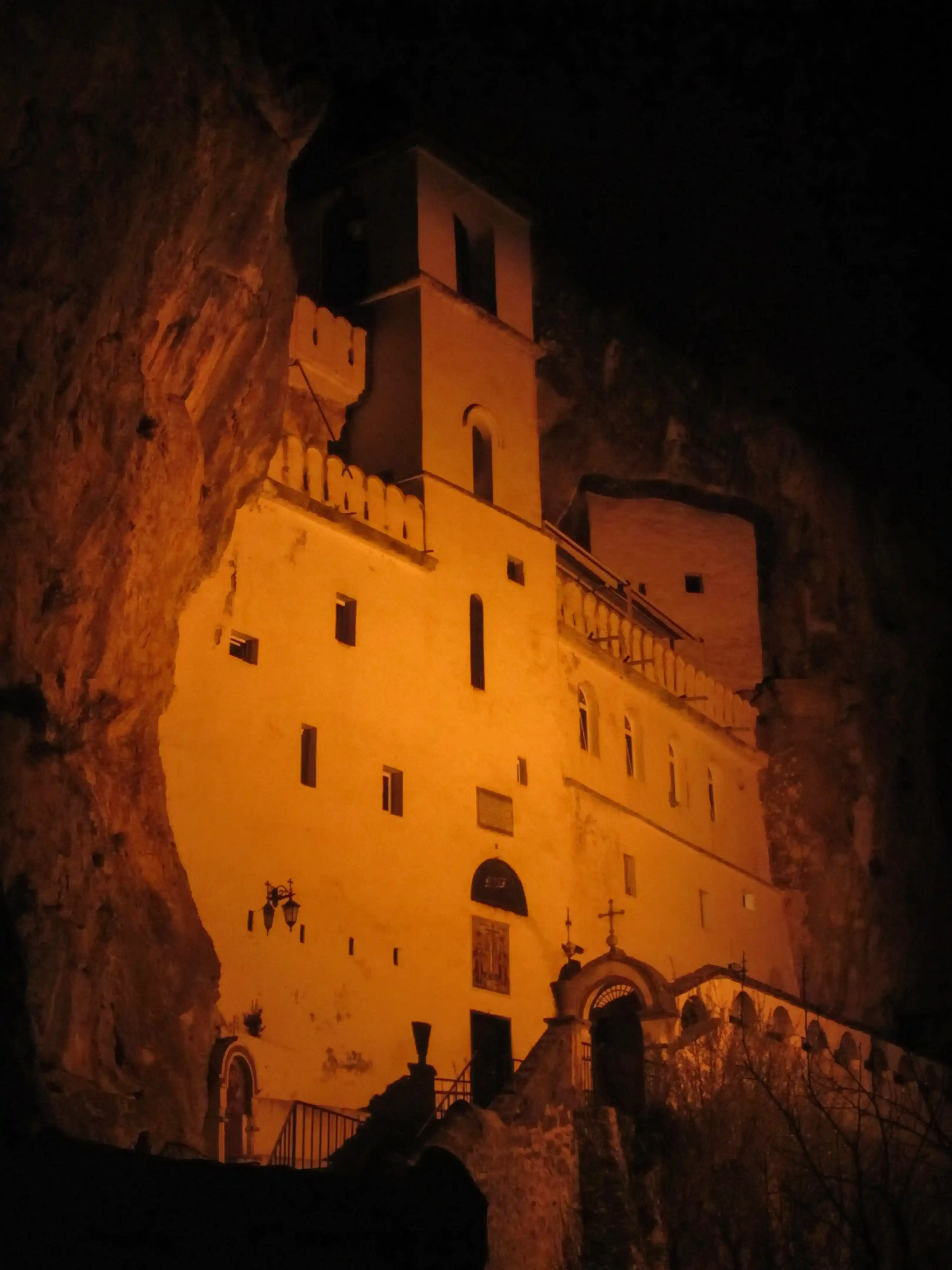Ostrog Monastery
Ostrog Monastery, the most important Orthodox Christian pilgrimage site in Montenegro, is located near the village of Bogetici, approximately 25 miles northwest of the capital city of Podgorica. The monastery is situated on an almost vertical cliff, high up the large rock of Ostroska Greda.
The monastery was founded by, and is dedicated to, Saint Basil (1610 - 1671). The monastery has two small churches, an upper and a lower. The Upper Church, built in a cave, was constructed and decorated with wall paintings in 1665 and is dedicated to the Holy Cross. The Lower Church dates from the 18th century and is dedicated to the Presentation of the Virgin Mary (Vavedenje of the Holy Mary). St. Basil’s body, believed to have miraculous healing powers, is enshrined in a reliquary kept in the Lower Church. More than a hundred thousand pilgrims from around the world visit the monastery each year.
The there are two major pilgrimage festivals at Ostrog, one celebrating the Presentation of the Blessed Virgin Mary, the other commemorating the death of St. Basil.
The Presentation of the Blessed Virgin Mary (as it is known in the West), or Vavedenje of the Holy Mary (its name in the East), is a liturgical feast day celebrated by Roman Catholic and Orthodox Churches. The feast is associated with an event recounted not in the New Testament but in the apocryphal Infancy Narrative of James. According to that text, Mary's parents, Joachim and Anne, who had been childless, received a heavenly message that they would bear a child. In thanksgiving for the gift of their daughter, they brought her, when still a child, to the Temple in Jerusalem to consecrate her to God. Mary remained in the Temple until puberty when she was assigned to Joseph as guardian. Later versions of the story (such as the Gospel of Pseudo-Matthew and the Gospel of the Nativity of Mary) record that Mary was taken to the Temple at around the age of three in fulfillment of a vow. Tradition held that she was to remain there to be educated in preparation for her role as Mother of God.
The Eastern Orthodox Church, which follows the Julian calendar, celebrates the Presentation of the Virgin Mary as one of its twelve Great Feasts on November 21. The Roman Church, following the Gregorian calendar, celebrates this festival on December 4. The anniversary of the death of St. Basil is celebrated on April 29 according to the Julian calendar, or May 12 according to the Gregorian.
Pilgrims visiting Ostrog may stay in hotels located a few miles from the monastery or in large dormitory-style rooms at the monastery itself. Only beds, blankets, and pillows are provided in these dormitory rooms.
The Gospel of Pseudo-Matthew is a part of the New Testament Apocrypha and sometimes goes by the name of The Infancy Gospel of Matthew, but the actual name of the text in antiquity was The Book About the Origin of the Blessed Mary and the Childhood of the Savior. Pseudo-Matthew is one of a genre of "Infancy gospels" that seek to fill out the details of the life of Jesus of Nazareth up to the age of 12, which are briefly given in the Gospels of Matthew and Luke. In the West, it was the dominant source for pictorial cycles of the Life of Mary, especially before the late Middle Ages. It was probably written between 600 and 625 CE.

Martin Gray is a cultural anthropologist, writer and photographer specializing in the study of pilgrimage traditions and sacred sites around the world. During a 40 year period he has visited more than 2000 pilgrimage places in 160 countries. The World Pilgrimage Guide at sacredsites.com is the most comprehensive source of information on this subject.



